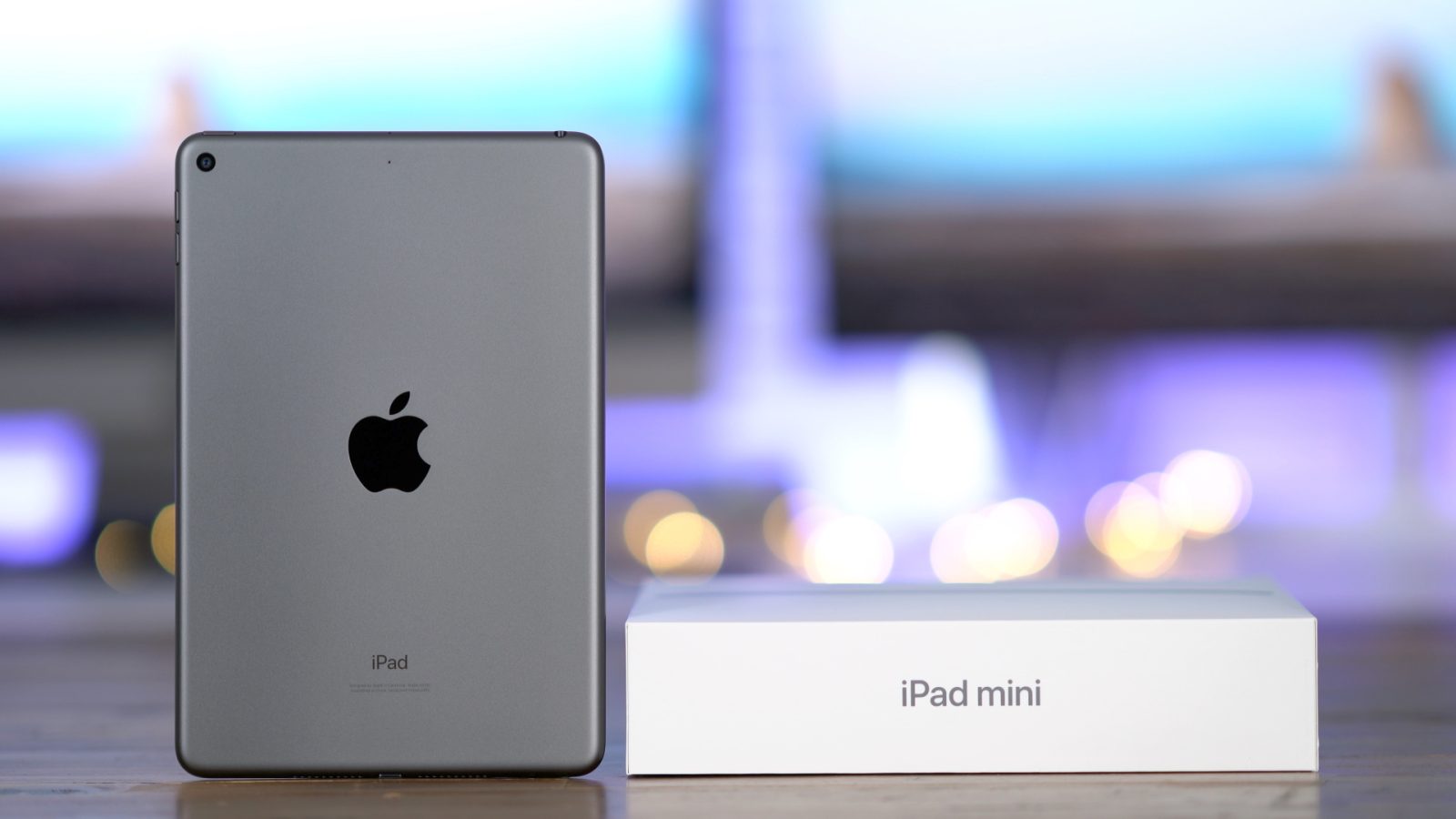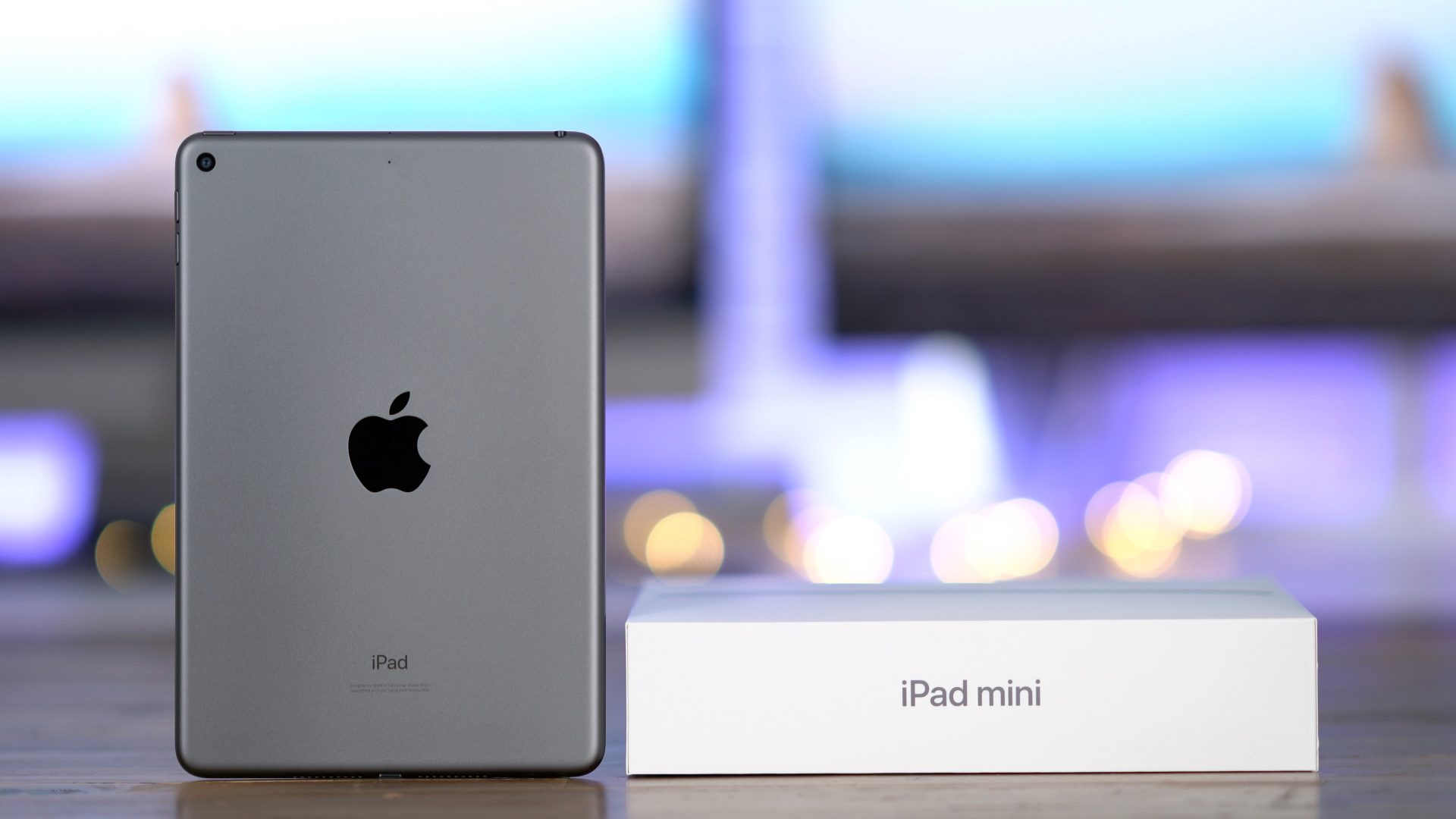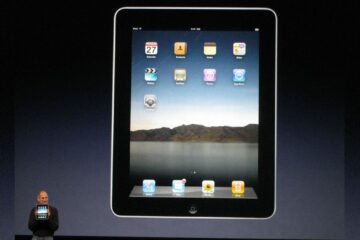
From the outside, the new iPad mini is virtually a carbon copy of the iPad mini 4, but it’s sporting some serious upgrades under the hood. As you’ve probably heard, the 5th-generation iPad mini is basically an iPad Air 3, just in a much more compact form-factor.
Indeed, the iPad mini 5 is a powerful tablet that can almost fit in your pocket, but the size, or lack thereof, can be both a gift and a curse depending on your needs. Watch our hands-on iPad mini 5 review video for the details.
Contents
It’s a smaller, slightly less capable, iPad Air 3
Unlike early iPad mini iterations, the smallest tablet in Apple’s lineup is no longer its cheapest model. The $399 iPad mini 5 gives Apple an iPad that sits just above the entry-level $329 iPad model as far as price is concerned, so it’s not like Apple decided to produce it merely to cater to the low-end of the market.
It’s the iPad mini’s diminutive form-factor that makes it such an appealing device. Apple must know that the small footprint moves the sales needle enough for it to justify a refresh.
iPad mini 5 video review
Subscribe to 9to5Mac on YouTube for more videos
If you haven’t watched our iPad Air 3 review, I highly recommend that you do so, because, as you’ll see, most of what’s stated there also applies to this iPad mini 5 review. That said, there are differences between the two.
Released at the same time as the new iPad Air 3, the iPad mini 5 shares nearly all of the features of its larger sibling. This means that the iPad mini 5 is just as powerful as the iPad Air 3 from a performance perspective. In fact, both tablets share the same A12 Bionic chip with Neural Engine, the same amount of RAM (3GB), the same cameras, and same display technology.
![iPad mini 5 review: when portability matters most [Video]](https://9to5mac.com/wp-content/uploads/sites/6/2019/04/iPad-mini-5-review-comparison.jpg?quality=82&strip=all)
Just like the recent iPad Air refresh, the iPad mini gains Apple Pencil support for the very first time. That means you can use your iPad mini to take notes, or explore your artistic side, with pressure-sensitivity, and tilt support in tow.
![iPad mini 5 review: when portability matters most [Video]](https://9to5mac.com/wp-content/uploads/sites/6/2019/04/iPad-mini-5-review-Pencil.jpg?quality=82&strip=all)
If you aren’t artistically inclined, but still need a stylus to take notes, the iPad mini 5 includes support for the Logitech Crayon. Logitech’s stylus is a more price-friendly offering that features Apple Pencil technology, but omits support for pressure-sensitivity that digital artists desire.
Specifications
- Apple A12 chip with Neural Engine
- 3GB RAM
- 64GB ($399) 256GB ($549)
- Wi-Fi and Cellular option
- 7.9-inch Display
- 2048×1536 resolution
- P3 wide color display
- Laminated digitizer
- Antireflective coating
- Compatible with first-gen Apple Pencil
- Dual stereo speakers
- 8-megapixel f/2.4 rear camera
- 7-megapixel f/2.2 FaceTime HD camera
- Touch ID
- 3.5mm headphone connection
- Lightning connector
- Bluetooth 5.0
- eSIM support
- Several additional Gigabit-class LTE bands
- Silver, space gray, and gold color options
- $399 starting price
The 2019 iPad mini features the exact same dimensions as its predecessor, including a 7.9-inch display with a 2048×1536 resolution. With its new refreshed internals, it’s just slightly heavier than the previous generation release.
![iPad mini 5 review: when portability matters most [Video]](https://9to5mac.com/wp-content/uploads/sites/6/2019/04/iPad-mini-5-rear.jpg?quality=82&strip=all)
Outside of size, one of the biggest differences between the mini 5 and the Air 3 is Smart Connector support. The Air 3 features a Smart Connector, which allows it to interface with Apple’s Smart Keyboard, while the iPad mini 5 does not. This isn’t surprising, given how incredibly cramped and impractical such a tiny keyboard would be.
![iPad mini 5 review: when portability matters most [Video]](https://9to5mac.com/wp-content/uploads/sites/6/2019/04/iPad-mini-5-no-smart-connector.jpg?quality=82&strip=all)
Other than the lack of Smart Keyboard support, the mini 5 is essentially an iPad Air 3 that’s been inconspicuously stuffed inside the body of an iPad mini. Performance-wise, that’s a very good thing, but there are downsides to reusing such a design.
Notable iPad mini 5 upgrades
Just like the iPad Air 3, the iPad mini 5 receives a substantial display upgrade. The screen now supports P3 wide color and features a brighter backlight (500 nits vs 450 nits). Coupled with the laminated display and improved backlight, the iPad mini 5 features a strong antireflective coating with just 1.8% reflectivity.
![iPad mini 5 review: when portability matters most [Video]](https://9to5mac.com/wp-content/uploads/sites/6/2019/04/iPad-mini-5-review-screen.jpg?quality=82&strip=all)
An additional commonality between the iPad Air 3 and the iPad mini 5 is its support for True Tone, the display technology that automatically adjusts the screen’s white balance to match the ambient light in your surrounding environment. Such changes make the iPad mini experience all that more enjoyable for browsing photos, reading the web and reading books, even with light from the sun or other sources hitting your display.
![iPad mini 5 review: when portability matters most [Video]](https://9to5mac.com/wp-content/uploads/sites/6/2019/04/iPad-mini-5-review-True-Tone.jpg?quality=82&strip=all)
The A12 Bionic chip with Neural Engine, the same chip found in the current-generation iPhone XS, iPhone XS Max, and iPhone XR, runs circles around the A8 chip found in the iPad mini 4. Like the iPad Air 3, the iPad mini 5 also benefits from an additional gigabyte of RAM for a total of 3GB.
![iPad mini 5 review: when portability matters most [Video]](https://9to5mac.com/wp-content/uploads/sites/6/2019/04/iPad-mini-5-vs-mini-4-Geekbench-4.jpg?quality=82&strip=all)
The rear facing 8-megapixel f/2.4 camera appears to be the same hardware found in the iPad mini 4 and iPad Air 2, but the FaceTime HD camera receives a substantial upgrade from 1.2-megapixels to a much more capable 7-megapixels. And instead of 720p HD video recording, the new FaceTime HD camera can shoot in 1080p and benefits from the inclusion of the Retina Flash.
![iPad mini 5 review: when portability matters most [Video]](https://9to5mac.com/wp-content/uploads/sites/6/2019/04/iPad-mini-5-review-Retina-Flash.jpg?quality=82&strip=all)
iPad mini advantages and disadvantages
The iPad mini’s biggest asset — its size — also happens to be its biggest problem. The 7.9-inch display means there’s a limited amount of screen real estate to run iPad apps. With Apple Pencil support, digital artists might fire up Procreate to create an illustration, but you’ll be at an immediate canvas size disadvantage when compared to larger tablets like the 9.7-inch iPad, 10.5-inch iPad Air 3, 11-inch iPad Pro, or the monstrosity that is the 12.9-inch iPad Pro.
![iPad mini 5 review: when portability matters most [Video]](https://9to5mac.com/wp-content/uploads/sites/6/2019/04/iPad-mini-5-review-LumaFusion.jpg?quality=82&strip=all)
Other apps, like Safari or Tweetbot, will display less on screen content at once, requiring the user to scroll in order to see what users on larger iPads can see without scrolling. And although Split View, Slide Over, and Picture-in-Picture multitasking are all supported on the iPad mini 5, you’ll probably want to use such features sparingly, as they eat up precious screen real estate.
![iPad mini 5 review: when portability matters most [Video]](https://9to5mac.com/wp-content/uploads/sites/6/2019/04/ipad-mini-5-disadvantages.jpg?quality=82&strip=all)
An outdated design
The large bezels on the iPad mini 5 don’t do the small screen any favors. The iPad mini 5 looks outdated due to the large bezels, especially the forehead and chin area. The design is more akin to the base $329 iPad than the iPad Air 3 in this regard.
The bezels on the 2018 iPad are also large, but its larger display helps to balance out the look. The iPad mini 5, with its tiny 7.9-inch display, doesn’t have that luxury and sort of feels like it’s drowning in bezels.
![iPad mini 5 review: when portability matters most [Video]](https://9to5mac.com/wp-content/uploads/sites/6/2019/04/iPad-mini-5-review-Bezels.jpg?quality=82&strip=all)
Small form-factor benefits
But having such a diminutive form-factor also has its advantages. The most obvious advantage is that the iPad mini is portable, easily fitting in areas — bags, purses, pockets?! — where larger tablets may not.
![iPad mini 5 review: when portability matters most [Video]](https://9to5mac.com/wp-content/uploads/sites/6/2019/04/iPad-mini-5-review-pocket.jpg?quality=82&strip=all)
Another area where the mini’s size works to its advantage is with typing. Daring Fireball’s John Gruber astutely noted how easy the iPad mini was to type on while holding it in your hand, and I wholeheartedly agree. It makes the iPad mini’s lack of Smart Keyboard support less of a factor than initially imagined.
![iPad mini 5 review: when portability matters most [Video]](https://9to5mac.com/wp-content/uploads/sites/6/2019/04/iPad-mini-5-typing.jpg?quality=82&strip=all)
It’s been a while since I’ve regularly used an iPad mini, but after a few minutes of experiencing the 5th-gen model, I was able to recall how much I enjoyed being able to quickly knock out sentences and paragraphs thanks to its miniature chassis.
Coming from a larger device like the 11-inch iPad Pro, where it’s frustratingly difficult to type while holding the tablet, it’s a refreshing experience. Handheld typing is, indeed, one of the key ways that the mini form-factor is better than any other iPad on sale today.
9to5Mac’s take
Until Apple decides to make a folding tablet, the best you can do from a portability standpoint is the iPad mini. If portability is the most important factor in your eyes, then there’s nothing more that needs to be said, the iPad mini 5 is the tablet for you. However, if portability isn’t at the top of your list, then you’ll need to decide between the 9.7-inch iPad and the iPad Air 3. In that case, the deciding factor should boil down to performance versus price.
![iPad mini 5 review: when portability matters most [Video]](https://9to5mac.com/wp-content/uploads/sites/6/2019/04/iPad-mini-5-review-rear.jpg?quality=82&strip=all)
Although the design of the iPad mini 5 looks a bit outdated in 2019, it’s still by far the best small form-factor tablet on the market. And now with the added performance of the A12 Bionic chip, it’s not just portable — it’s a portable powerhouse.
[“source=9to5mac”]



